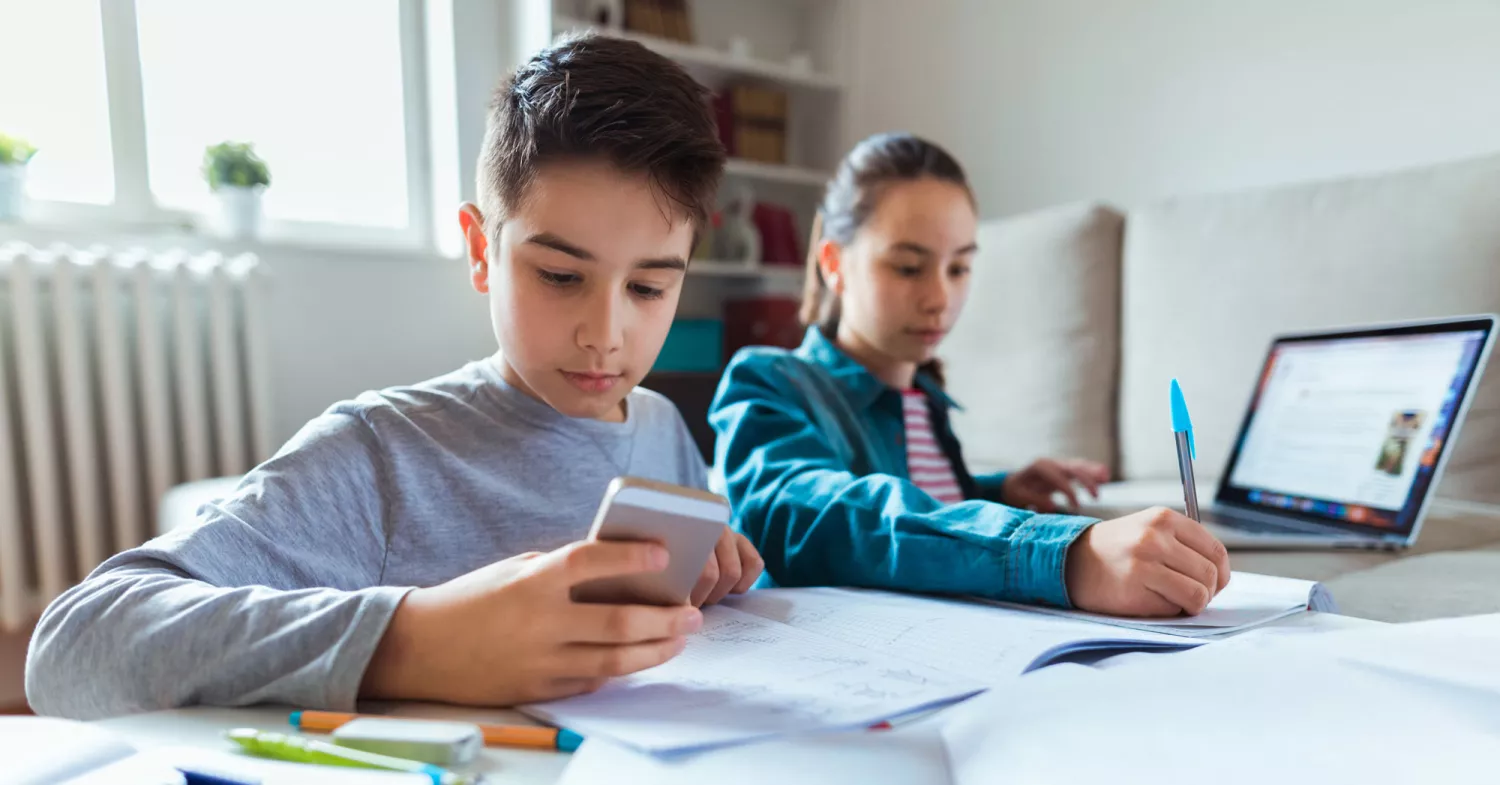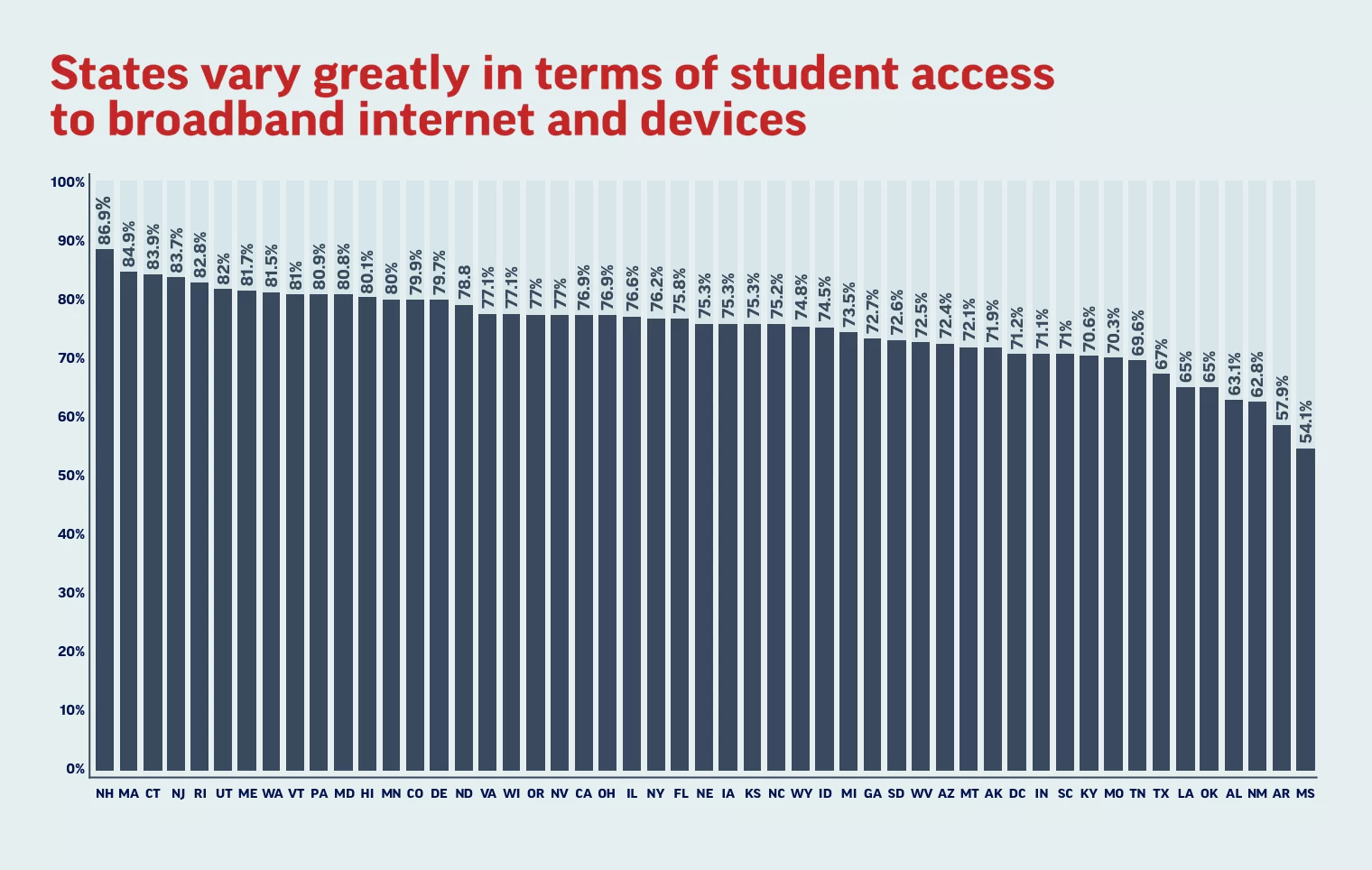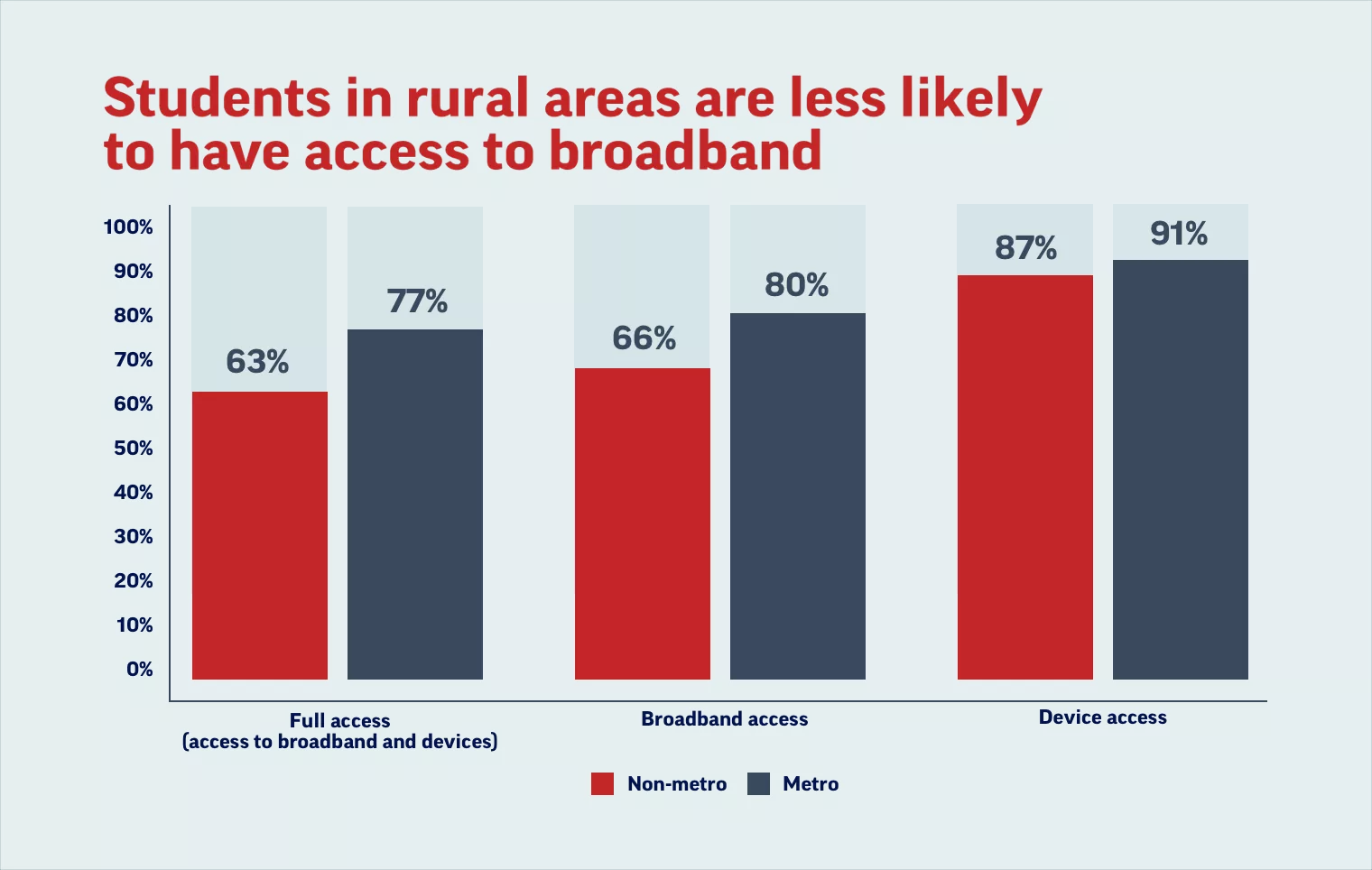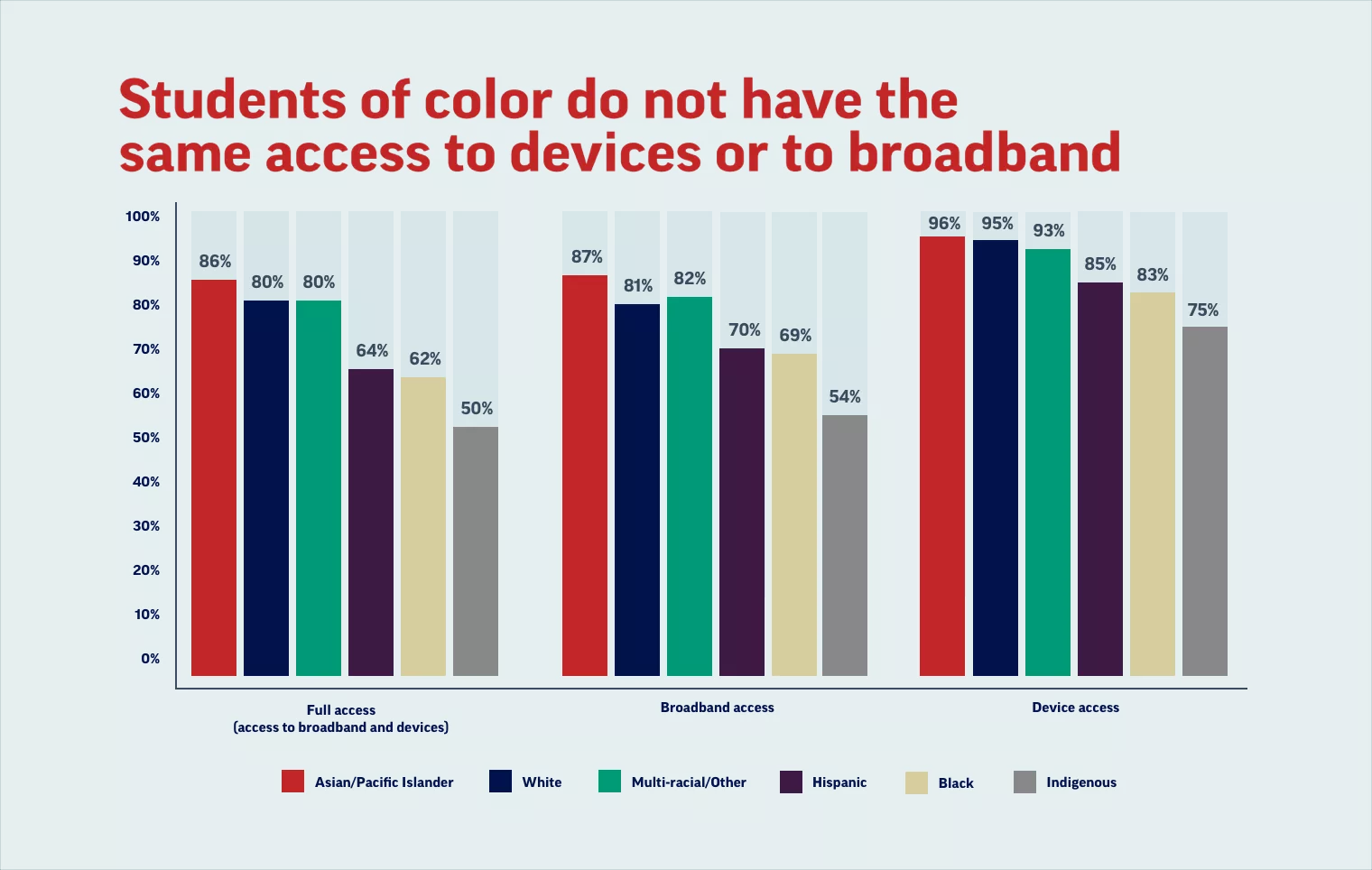Access to the internet the devices necessary to access it are essential for learning. No matter where students live, it is critical for conducting research, doing homework, and attending class when school buildings are closed.
For too many, the door to the virtual classroom is blocked. NEA research reveals that an estimated one quarter of all school-aged children live in households without broadband access or a web-enabled device such as a computer or tablet. This inequality is systematically related to the historical divisions of race, socioeconomic status, and geography.
25% of all school-aged children live in households without broadband access or a web-enabled device (such as a computer or tablet).
For some, the internet and laptops are simply too expensive. Often, multiple people in the same household are forced to share one or two devices. Others lack sufficient broadband infrastructure. The result? Native students, rural students, and students of color are now much less likely to have full connectivity.
To ensure all our students have what they need to learn, we must invest in building broadband infrastructure and in programs like the federal E-Rate program, which would provide funds to help schools purchase and provide Wi-Fi hotspots, connected devices, and other necessary technology.

Yet, the U.S. Senate has failed to adequately fund the E-Rate program during the pandemic. With $12 billion in additional one-time funding, the program will distribute funds equitably, quickly and efficiently, and help students get online to learn.
We must come together—Black, white, brown, and Indigenous, from farm to town to city—to ensure all our students have the tools they need to learn and receive a high-quality education.
NEA's Findings
Suggested Further Reading
The Problem
A solution
Are you an affiliate?





